From Gothic to Glamorous: 8 Black Flowering Plants You’ll Love
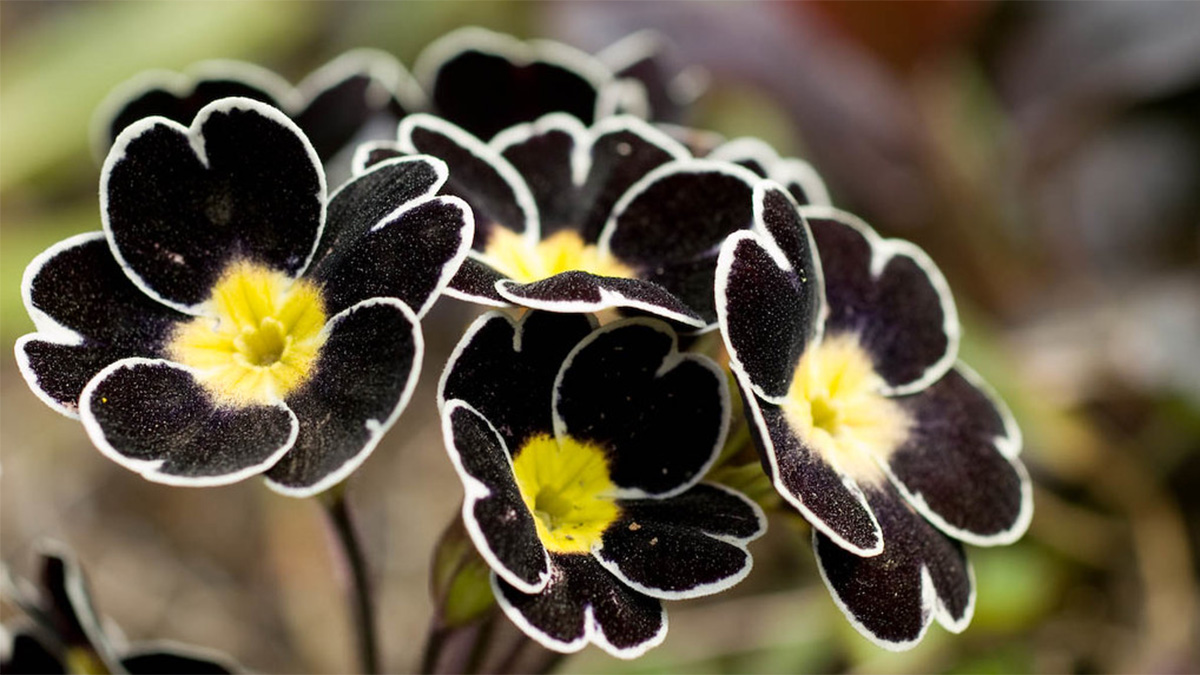
Black flowering plants bring a sense of mystery, elegance, and drama to any garden. From velvety tulips to exotic bat flowers, these striking blooms create stunning contrast and make unforgettable focal points. In this guide, we’ll explore eight gorgeous black flowers that can transform your garden from gothic to glamorous.
Why choose black flowering plants
Black flowers bring an air of mystery and sophistication to gardens. Their dark tones create striking contrast when paired with lighter or pastel blooms. They also suit themed gardens, from dramatic gothic landscapes to chic and modern outdoor spaces.
Many of these plants are not truly black but instead display very deep purples, burgundies, or reds. In the right lighting, they appear almost jet black. This unique quality makes them stand out and adds depth to any planting scheme.
Black tulip (Tulipa ‘Queen of Night’)
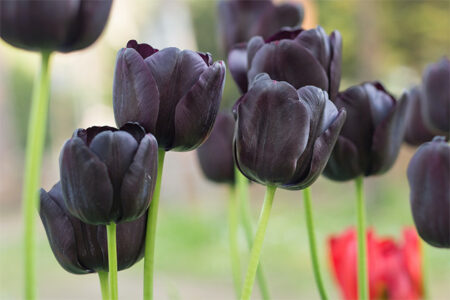
The Queen of Night tulip is one of the most famous black flowers. Its velvety, deep maroon petals look almost black, especially in full bloom. It flowers in late spring and adds elegance to borders or mixed displays.
Plant tulip bulbs in fall, about six inches deep in well-drained soil. They thrive in sunny spots and should be lifted and stored if winters are very wet. Their dramatic look makes them perfect for cut flower arrangements as well.
Black hollyhock (Alcea rosea ‘Nigra’)
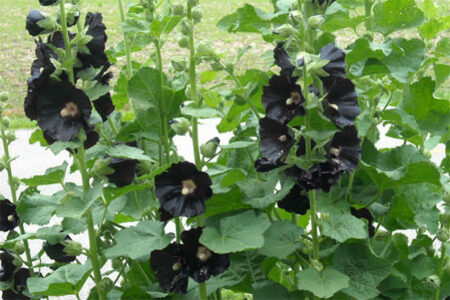
Black hollyhocks are tall, stately plants that can reach heights of six to eight feet. Their nearly black, single-petaled flowers line tall spikes and create a bold vertical statement in summer gardens. They are biennial or short-lived perennials, but they reseed easily.
Hollyhocks prefer full sun and fertile, well-drained soil. They look best planted at the back of borders or against fences and walls. Pair them with lighter-colored blooms to make their dark flowers pop.
Black dahlia (Dahlia ‘Arabian Night’)
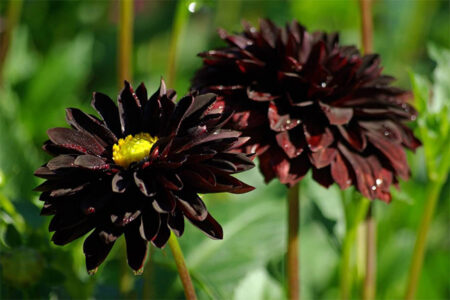
Dahlia Arabian Night produces large, full blooms in shades of rich burgundy that appear almost black in certain light. These flowers are a favorite for adding drama to summer and fall gardens. Their bold form makes them a natural focal point.
Plant dahlia tubers in spring after the danger of frost has passed. They require regular feeding and staking to support heavy blooms. Black dahlias also work beautifully in floral arrangements due to their strong, long stems.
Black pansy (Viola x wittrockiana ‘Black Beauty’)
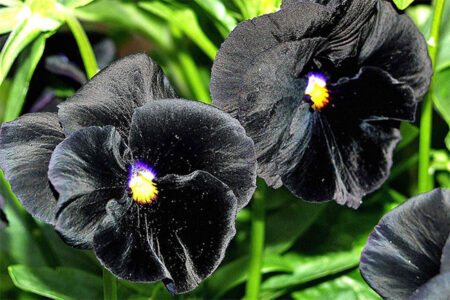
Black pansies are compact, cheerful plants with velvety flowers that look nearly jet black. They add dramatic contrast in containers, edging, or seasonal beds. Their blooms often feature a golden or purple eye that enhances their striking appearance.
They grow best in cool seasons and can be planted in early spring or fall. Pansies appreciate moist, fertile soil and partial to full sun. Black varieties pair well with bright pansies to create colorful displays.
Bat flower (Tacca chantrieri)
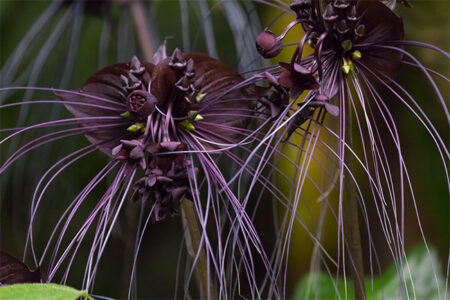
The bat flower is one of the most unusual black flowering plants. Its bloom resembles a bat in flight, complete with whisker-like bracts that dangle gracefully. Native to tropical regions, it is a conversation starter for plant lovers.
This plant prefers warm, humid environments and indirect light. It can be grown indoors in cooler parts of the USA with the right humidity levels. Its exotic look makes it especially appealing for collectors of rare plants.
Black iris (Iris chrysographes)
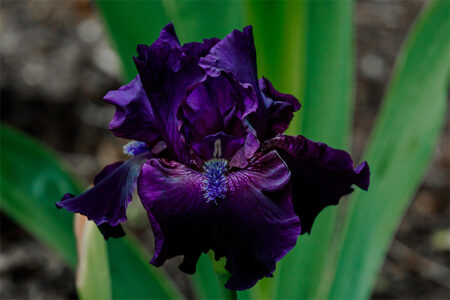
The black iris is a striking perennial with sword-like foliage and deep purple-black blooms. It thrives in moist soil and creates a luxurious, elegant effect in gardens. Its blooms appear in late spring to early summer.
Black irises are perfect for planting near water features or in damp borders. They mix beautifully with lighter irises or tall perennials. Their blooms are short-lived but unforgettable.
Black hellebore (Helleborus orientalis hybrids)
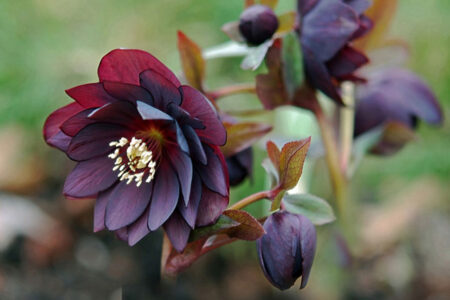
Hellebores are shade-loving perennials that bloom in late winter and early spring. Black-flowered hybrids produce dark, moody blossoms that stand out in woodland gardens. Their evergreen foliage adds year-round interest.
Plant hellebores in rich, well-drained soil under partial shade. They benefit from mulch and protection from strong winter winds. Black varieties add contrast when mixed with lighter hellebores or early spring bulbs.
Black calla lily (Zantedeschia hybrids)
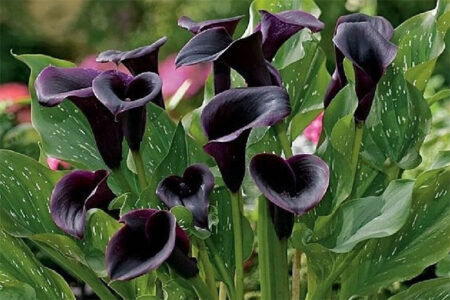
Black calla lilies produce elegant, trumpet-shaped blooms in shades of deep purple-black. Their sleek, modern appearance makes them popular for both gardens and floral arrangements. They bloom in summer and can also be grown as potted accents.
These lilies grow best in moist, well-drained soil and full sun to partial shade. In colder regions, bulbs should be lifted and stored for winter. Black calla lilies are especially popular in wedding bouquets and arrangements for their dramatic flair.
Designing with black flowering plants
Dark flowers look best when paired with contrasting colors. Combine them with white, pink, or yellow blooms to highlight their richness. Foliage plants with silver or lime green leaves also make striking companions.
Black flowers can serve as bold focal points in garden beds. Use them sparingly to create impact without overwhelming the design. They are also excellent choices for themed gardens where mood and atmosphere are key.
Caring for black flowering plants
Most black flowers have similar needs to their standard-colored counterparts. They thrive in well-prepared soil with the right balance of light and moisture. Regular feeding and deadheading help encourage more blooms.
Since many black flowers are hybrids or specialty varieties, they may need extra attention to thrive. Protect delicate blooms from harsh midday sun, which can fade their color. Keep an eye on pests and diseases, and treat problems early for best results.
Frequently asked questions
Are black flowers truly black or just very dark shades?
Most so-called black flowers are actually very deep shades of purple, burgundy, or maroon. In certain lighting, they appear black to the eye.
Can black flowering plants grow in all climates?
Some black flowers, like tulips and pansies, prefer cooler climates, while others, such as calla lilies, thrive in warmer regions. Choosing varieties suited to your USDA zone ensures success.
Do black flowers require special care compared to other plants?
Generally, they require the same care as other varieties of their species. The main difference is ensuring proper growing conditions to maintain their deep coloration.
Which black flower is easiest for beginners?
Black pansies and Queen of Night tulips are among the easiest to grow. They adapt well to gardens across the USA and provide reliable, dramatic results.
Conclusion
Black flowers are a bold choice, but they can elevate your garden in unique and memorable ways. Whether you want to add contrast, create a themed design, or simply grow something unusual, these plants offer beauty that ranges from mysterious to sophisticated. Try adding one or two to your beds or borders and discover how dramatic dark blooms can be.
